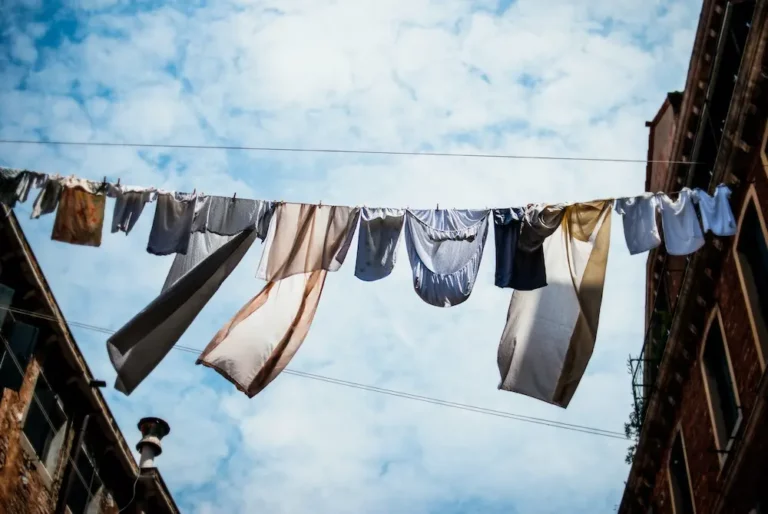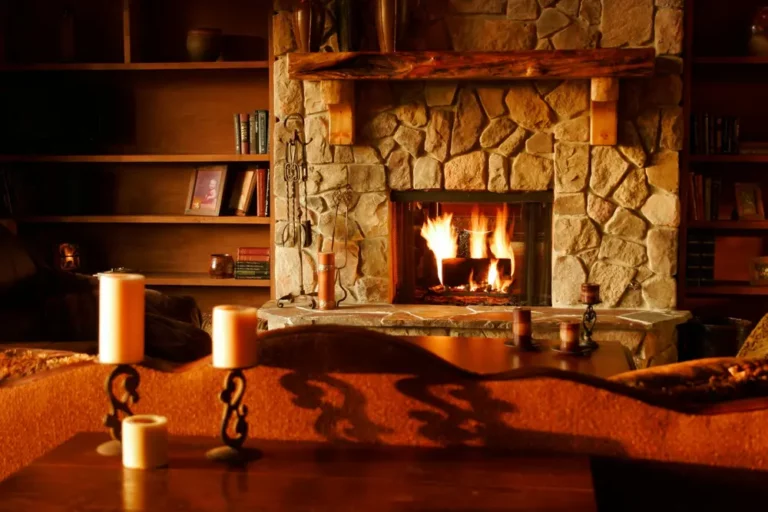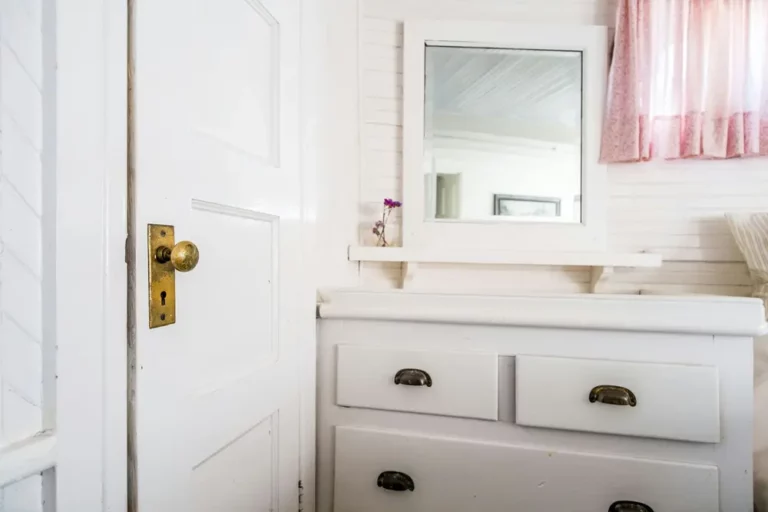Hearing Voices Through Vents? When to Call HVAC & Mental Health Pros
Moving into a new apartment with my roommates brought a quirky surprise: the ability to hear conversations through the vents as if we were all in the same room. It’s an odd feeling, knowing that a simple phone call isn’t as private as you’d think. This phenomenon, while fascinating, raised a few eyebrows and concerns about privacy in our cozy living space.
The culprit behind this unexpected eavesdropping? A term called “flanking noise,” which travels through air vents with ease. It turns out, the design of our apartment’s HVAC system, with its straight and unobstructed ducts, makes it a perfect conduit for sound. As someone who values a bit of privacy, I’ve become quite interested in finding ways to remedy this situation. And I’m sure I’m not alone in this quest.
Understanding the Phenomenon of Hearing Voices Through Vents
Hearing whispers, conversations, or even clear voices through the vents in your home can be unnerving. I’ve experienced this firsthand, and it sent me down a rabbit hole to understand why and how this happens. It turns out, the phenomenon isn’t just about the physical aspects of sound transmission but also involves some fascinating psychological elements.
The Science Behind Sound Transmission in Vents
At first, I thought my apartment was haunted, but the real explanation is much more grounded in physics. Sound waves are vibrations that travel through air. In a typical home, HVAC ducts provide a perfect channel for these waves, especially when they’re straight and unobstructed. My vents, like many others, act like a megaphone, picking up conversations from my neighbors and funneling them right into my living space. Adding to the complexity, materials used in ductwork can impact sound transmission. Metal ducts, for instance, can reflect sound waves more efficiently than flexible ducting, which tends to absorb and muffle the vibrations due to its curved, irregular surface.
Psychological Factors: Auditory Pareidolia Explained
There’s also a psychological angle to hearing voices through vents that’s absolutely fascinating. It’s called auditory pareidolia. This is where our brain tries to make sense out of random noises, often interpreting them as familiar sounds or voices. Late at night, when it’s quiet, the hum of the HVAC system can morph into whispers or conversations in my head. It’s a bit like seeing shapes in clouds. Our brains are hardwired to search for patterns and meanings, even when there aren’t any. So, it might not always be my neighbor’s conversations I’m hearing through the vents but my brain trying to find order in chaos.
This blend of physical sound transmission pathways and the brain’s tendency to fill in gaps leads to the intriguing experience of hearing voices through vents.
Common Causes for Hearing Voices Through Vents
It seems pretty bizarre, right? Here I am, trying to enjoy some peace, and suddenly, it sounds like there’s a whole conversation happening in my vent. It’s not just me; this phenomenon has got a lot of us scratching our heads. Let’s explore some common causes behind this eerie experience.
Cross-Talk: Sound Traveling Through Ductwork
First up, let’s talk about the science bit. HVAC systems in buildings are not just there to keep us cool or warm; they’re an entire network of ducts that crisscross above our heads. And guess what? These ducts can carry sound just as well, if not better than they do air. The design of the airflow system, especially straight ducts, can amplify sounds from other rooms or apartments and direct them straight to you. It’s not magic, just physics doing its thing. Most homes have flexible ducts designed to reduce sound travel. However, straight, unobstructed ducts without any curves make it incredibly easy for sound waves to travel. So, if your neighbor decides to have a chat near a vent, it might just seem like they’re right beside you, having that conversation.
Stress and Sleep Deprivation: Their Role in Auditory Hallucinations
Onto something a bit more complex – our brains. It’s fascinating how our minds work, especially under pressure. If you’re going through a period of high stress or not getting enough shut-eye, things start to get a bit wonky, including your auditory perception. Known as auditory hallucinations, this phenomenon can make you hear things that aren’t really there – voices through vents included. It’s your brain trying to make sense of random noises, turning them into something familiar, like conversations. While it’s usually harmless, it’s a good reminder to take care of your mental health, ensuring you’re getting enough rest and managing stress levels.
External Factors: Identifying Real Voice Sources
Last but not least, let’s consider the more straightforward explanations. Sometimes, the voices are not a product of sound travel through ductwork or our minds playing tricks. External sources, like open windows, thin walls, or even technology like baby monitors or other electronic devices, can transmit voices more clearly than one might expect. Before jumping to conclusions about your HVAC playing host to ghostly chats, it’s worth investigating these mundane sources. Often, the most straightforward explanation is the right one.
Practical Solutions to Mitigate Noise Through Vents
Living in a bustling environment, you’ll often encounter unexpected sounds filtering into your personal space. Hearing voices through vents can be particularly jarring. Luckily, I’ve explored a few practical solutions that can significantly reduce or even eliminate this issue. Let’s explore some of these methods.
Creating an Air Vent Sound Maze
The first strategy I’ve found effective is creating what’s known as an air vent sound maze. This isn’t as complex as it sounds. Essentially, the goal is to disrupt the direct path that sound waves travel through by introducing bends and turns within the ductwork. Sound, much like light, travels in straight lines, so by altering the path through strategic placement of baffles or barriers within the vent shaft, we can significantly reduce the amount of noise that passes through. It’s a fascinating approach that takes advantage of acoustic physics without obstructing the airflow, which is crucial for the ventilation system’s efficiency.
Implementing Sound Absorbing Materials in Ductwork
Another method I’ve explored involves the use of sound-absorbing materials within the ductwork itself. Materials such as acoustic foam or specialized duct liners can be placed inside the ducts to absorb sound waves rather than allowing them to bounce around and amplify. This technique is especially useful for mitigating the echoes and reverberations that can make voices heard through vents sound even louder than they are. The key here is selecting the right materials that balance sound absorption with maintaining air quality and flow.
The Use of Soundproofing Vent Covers
Lastly, the use of soundproofing vent covers has caught my attention. These covers are designed to fit over the existing vents, and they come in various forms, including magnetic vent covers and soundproof curtains. Soundproof curtains, for instance, are a versatile option that not only dampens sound but also adds an aesthetic touch to the room. These covers work by providing an additional layer that sound waves must penetrate, thus reducing their intensity before entering your space. It’s a simple yet highly effective way to control noise without making permanent modifications to the ventilation system.
Addressing HVAC System Issues
When I first noticed the unsettling experience of hearing voices through the vents in my home, I knew it was time to investigate the problem further. It turns out that the culprit often lies within the HVAC system itself. Let’s explore how we can address these issues and bring some peace back into our homes.
Regular Maintenance and Inspection
I’ve learned that one of the most straightforward ways to prevent unwanted noise, including voices from traveling through vents, is regular HVAC system maintenance and inspection. It’s like giving your car a tune-up; it keeps everything running smoothly and quietly.
- Check for Loose Connections: Over time, as the heating and cooling systems turn on and off, air ducts can slightly expand and contract. This natural process might loosen connections between ducts and vents, creating unnecessary noise.
- Seal Any Gaps: Applying a generous amount of foam sealant can fill in gaps where noise sneaks through. Remember, the foam expands, so a little goes a long way.
By ensuring everything is tight and gaps are sealed, we greatly reduce the chances of sound escaping through the vents. This simple step is often overlooked.
The Impact of HVAC Malfunction on Sound Transmission
An HVAC system that’s not functioning correctly can have a significant impact on sound transmission in a house. The reasons can range from increased air pressure due to improperly sized units to failing ductwork that creates more pathways for sound to travel.
- Oversized Air Conditioning Units: If the air conditioner is too big for the space, it can lead to increased air pressure in the ducts, making the sound of blowing air and voices much louder.
- Failing Ductwork: Old, damaged, or poorly installed ducts can sag, bend, develop holes, or even collapse. This not only creates noise as air leaks out or rushes past gaps but also provides a straight path for sounds like conversations to travel through the vents.
It’s fascinating—and a bit frustrating—how such seemingly minor issues can lead to the clear transmission of voices from one room to another through the ventilation system. My journey into addressing HVAC system issues taught me the value of not just looking at the obvious solutions but understanding how every component of our homes can contribute to the overall tranquility—or lack thereof.
Preventative Measures and Best Practices
Choosing the Right Materials for Sound Insulation
When I first encountered the issue of hearing voices through vents, I realized that the choice of insulation materials can make a huge difference. There’s a wide array of products designed specifically for soundproofing, and knowing which ones to use can be a game-changer. I’ve learned that materials like acoustic foam or mass-loaded vinyl (MLV) are highly effective for this purpose. Acoustic foam works by absorbing sound waves, preventing them from bouncing back into the room, while MLV adds mass to walls or ductwork, which helps block sound transmission.
I’ve also discovered that duct liners, a material used to insulate HVAC ducts, can significantly reduce noise coming through vents. It’s designed to absorb sound within the duct, decreasing the amount of noise that can travel through the system. Installing duct liners requires some DIY skills, but it’s feasible and worth the effort if peace and quiet are your top priorities.
Strategic Vent Placement to Reduce Sound Travel
Another vital aspect I found in my quest to eliminate noise transmission is the strategic placement of vents. It turns out that the location and direction of vents can significantly impact how sound travels between rooms. I’ve seen firsthand how vents that directly face each other across small spaces can act like a megaphone, amplifying sounds from one room to another.
To counter this, I’ve learned that positioning vents away from direct lines of sight between rooms can help. Incorporating indirect pathways for airflow, such as using flexible ductwork that bends and twists, can also reduce sound travel. This method forces sound waves to take a more circuitous route, losing energy and volume along the way.
Furthermore, considering the installation of baffles within the ductwork adds an extra layer of sound dampening. Baffles are essentially barriers that interrupt and redirect the flow of sound waves, significantly reducing noise. They can be particularly effective in large, straight ducts where sound has a clear path to travel.
Conclusion
Hearing voices through vents can be unsettling but it’s a sign that it’s time to take action. Whether it’s calling in HVAC experts to check for any structural issues or reaching out to mental health professionals if it’s impacting your peace of mind, taking that first step is key. Remember it’s all about creating a comfortable and healthy living space for yourself. I’ve learned that addressing these issues sooner rather than later not only helps in reducing unnecessary stress but also improves your overall quality of life. So don’t hesitate to seek the help you need. After all, your well-being is what matters the most.
FAQ – Frequently Asked Questions
What is a duct silencer?
A duct silencer, also known as a sound attenuator, sound trap, or muffler, is a device installed in ventilation ductwork to reduce noise transmission.
What is living in my vent?
Pests such as mice, rats, and cockroaches can inhabit your ductwork. They are most active and likely to be heard moving around during the night, between dusk and dawn.
What happens when sound travels through air?
When sound travels through air, it causes vibrations that create areas of compression in the air. These compressions carry energy and transmit it as they move, allowing us to hear sound.






